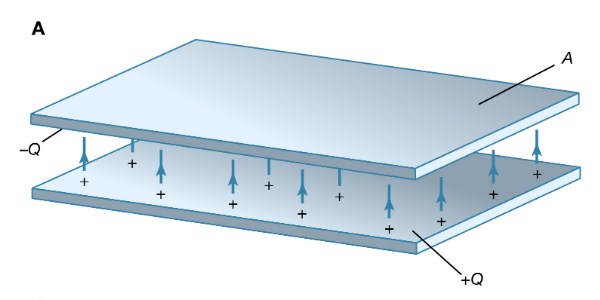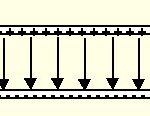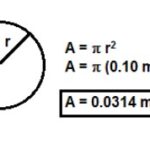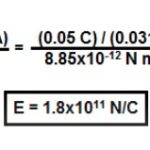Table of Contents
Electric Field Between Two Plates: By remembering the basic concept of Electric Field from Coulomb’s Law, that represents forces acting at a distance between two charges. We can reform the question by breaking it into two distinct steps, using the concept of an electric field. First, Think of one charge as generating an electric field everywhere in space. Second, The force on another charge brought into the electric field of the first is caused by the electric field at the location of the introduced charge.
If all charges are stationary, you get definitely the same answers with the electric field as you do use Coulomb’s Law. So, is this going to be just training in clever notation? No. The electric field concept appears on its own when charges are granted to move relative to each other.
Experiments show that only by considering the electric field as a property of space that transmits at a finite speed (the speed of light), can we account for the noticed forces on charges in relative motion. The electric field concept is also compulsory for understanding a self-propagating electromagnetic wave such as light.
The electric field concept gives us a way to represent how starlight travels through vast distances of empty space to reach our eyes. If the idea of force “acting at a distance“ in Coulomb’s Law seems troublesome, perhaps the idea of force caused by an electric field moderate your annoyance somewhat. On the other hand, you might also question if an electric field is any more “real“.

The phenomenon of an electric field is a topic for theorists. In any case, real or not, the notion of an electric field turns out to be useful for foreseeing what happens to charge. We introduce an electric field initially between parallel charged plates to ease into the concept and get practice with the method of analysis.
In this article, learn how to calculate the electric field between two charged parallel plates and also see the effect of this field on other charges.
Electric Field Between Two Charged Parallel Plates
Suppose that you have a very small metallic ball that is positively charged. You let it go, and it starts moving to the right, going faster and faster the farther away from you it gets. You can see that nothing touched it, but you can also see that something must have exerted a force on this charged object to make it speed up like that. What was it?
All charges generate an unseen electric field around them. This field can then exert a force on any other charges that are placed near to them. The positively charged ball that you released feels a force due to the existence of an electric field that must have been generated by some other charges that were nearby.
Electric fields exert forces on both positive and negative charges, but the direction of the force depends on both the direction of the field and the type of charge (positive or negative) that the object has. Positively charged objects will always feel a force in the same direction of the electric field, while negatively charged objects will always feel a force in a direction opposite to the electric field.
The magnitude of Electric Field
One way to generate a uniform electric field is to place two plates close to each other, then give one of them a positive charge and the other an equal negative charge. This will create an electric field between the plates that is directed away from the positively charged plate and towards the negatively charged plate.

If the size of the two charged plates is a lot bigger than the distance between the plates, then the electric field between the plates will be constant. It’s easier to find out the magnitude of this electric field. You only need to know the total amount of charge on each plate (Q) and the area of each plate (A).
The distance between the plates does not actually matter, as long as it is much smaller than the diameter of the plates.
Let’s look at an example of how to calculate the electric field between two charged parallel plates:
Example: If each plate is circular with a radius of 10 cm, and each has a total charge of 0.05 C, what is the magnitude of the electric field between these plates?
First, find the area of the plates.

Then use this area to calculate the magnitude of the electric field between the plates.

The motion of a Charged Particle
Now let’s see what would appear if you sent a moving charge into space between two charged plates.
The electric field between these plates will exert a force on this charge, so the first thing you need to do is determine which direction the force will be exerted on this charge.
According to our assumption, the positively charged particle feels a force in the direction of the electric field. The acceleration of a particle between the plates is proportional to the magnitude of the electric field. A positively charged particle moves toward the negative plate, a negatively charged toward the positive.
